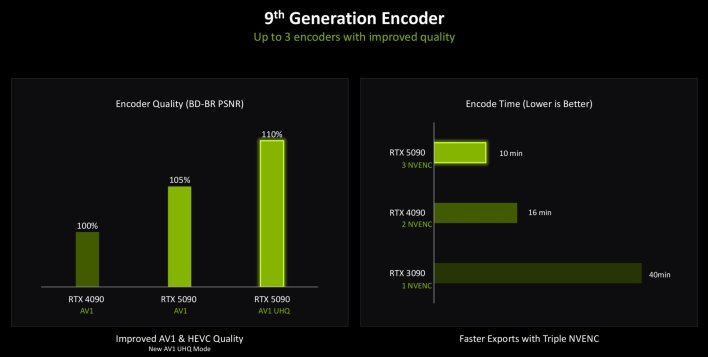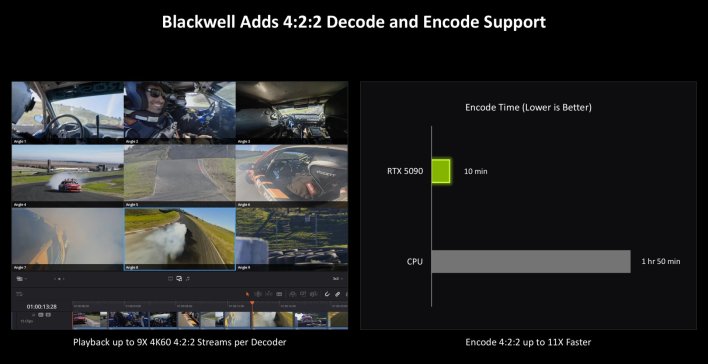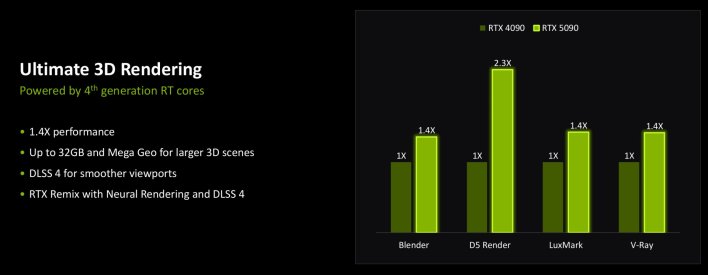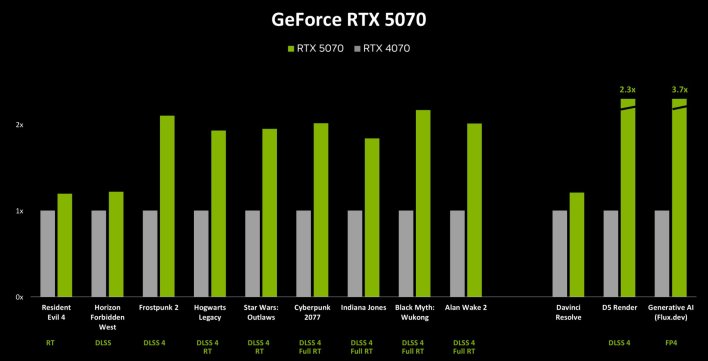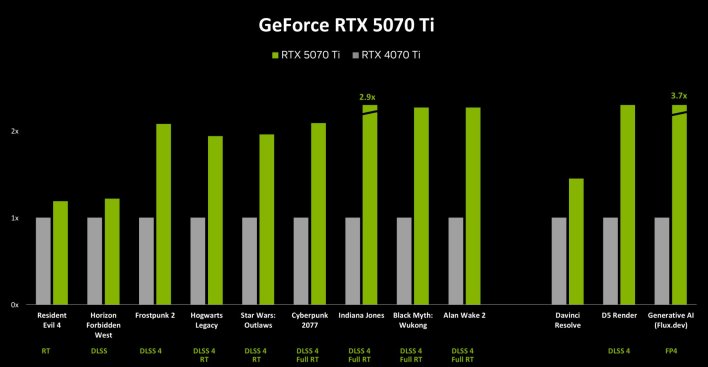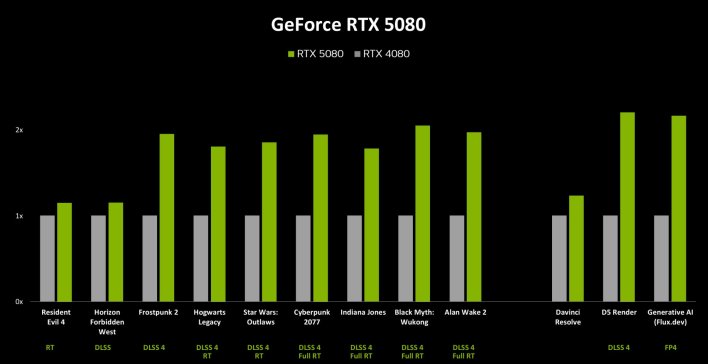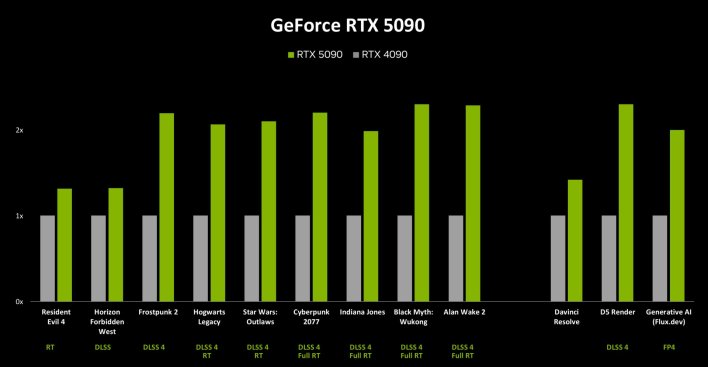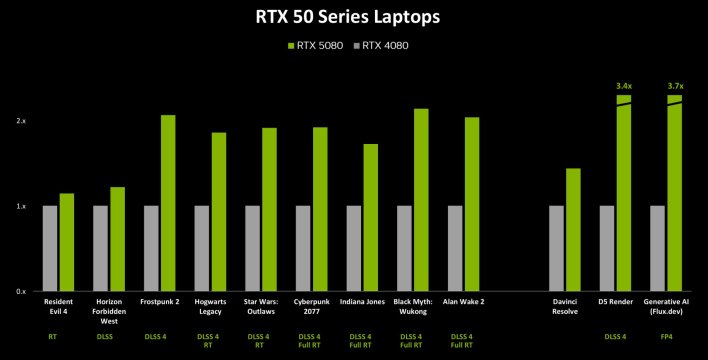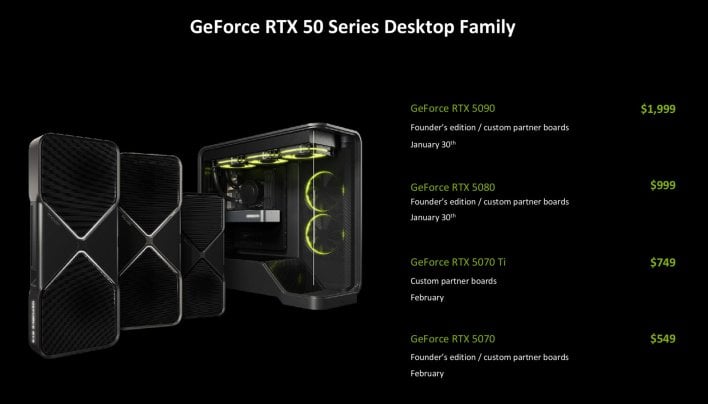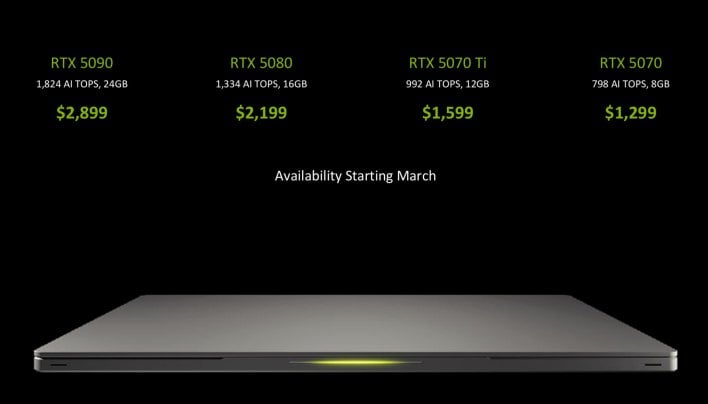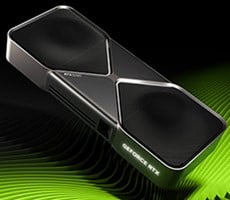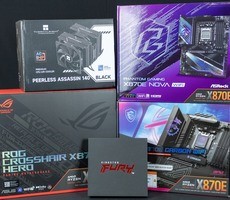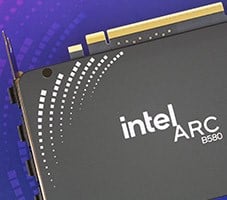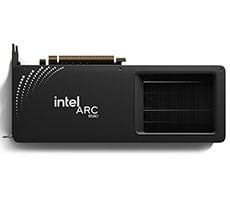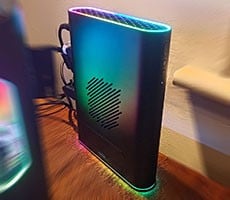NVIDIA RTX Blackwell In-Depth: Exploring The Heart Of GeForce RTX 50
Exploring RTX Blackwell Media Engine Updates And 3D Rendering
As mentioned previously, the media engine in Blackwell has not only been upgraded with 9th gen encoders and 6th gen decoders, but more of them are implemented within each GPU. The GeForce RTX 5090, for example, features three encoders, versus two in GeForce RTX 4090. The updated decoders are also capable of playing back 9 4K60 4:2:2 streams, per decoder, so they're more capable as well.The updates to the media engine add support for an AV1 UHQ (ultra high-quality) mode, offer double the throughput for H.264 decoding, and add support for hardware accelerated MV-HEVC and 4:2:2 video transcoding. MV-HEVC is a multiview extension of HEVC, which allows for coding of multiple views of the same scene, captured at different angles. And video with 4:2:2 chroma subsampling captures more color information than the more common 4:2:0 format, which affords additional headroom when color grading video and produces cleaner edge transitions, but it also requires more resources to process. Many of today’s mirrorless cameras and high-end video production cameras can capture 10-bit 4:2:2 video, and grading and transcoding it is typically done on a CPU.
Versus previous-gen GeForces, the RTX 5090 is not only able to transcode video in higher quality, but it increases performance as well. The additional encoder on the RTX 5090 can help take exports that took 16 minutes on a GeForce RTX 4090, down to only 10 minutes.
Hardware acceleration of 4:2:2 transcodes also boosts performance significantly. Encodes that could take upwards of 2 hours on a CPU can be completed in roughly 10 minutes on the RTX 5090. And the increased aggregate performance and capabilities of the media engine also translate into smoother scrubbing of timelines in production applications that properly support NVIDIA’s hardware, like Davinci Resolve, for example.
The 4th gen RT cores in the RTX 50 series also increase performance in 3D rendering applications that support them. Blender, Luxmark and V-Ray, for example, are up to 40% faster on an RTX 5090 versus the RTX 4090. We plan to test some of these applications in an upcoming review.
NVIDIA GeForce RTX 50 Series Expected Gaming Performance
Of course, the GeForce RTX 50 series will primarily be used for gaming, and NVIDIA provided a myriad of numbers for all of the upcoming desktop cards and the GeForce RTX 5080 mobile GPU. Note as you’re looking at these charts, that NVIDIA used different image quality settings and ray tracing modes, depending on the title and GPU. That means in games that have DLSS 4 support, DLSS 4 with multi-frame generation on the RTX 50 series is being compared to DLSS 3 or 3.5 with single-frame generation.If we focus on the far left of each of these charts, the various GeForce RTX 50 cards offer roughly 20 – 40% higher performance than their RTX 40 series counterparts with ray tracing or similar DLSS settings. As you enable higher levels of ray tracing and enable DLSS 4, however, the RTX 50 series runs away from the previous generation.
Also note the content creation and generative AI performance increases on the far right of each chart, which are substantial.
The GeForce RTX 5080 for laptops also shows similar performance increases across the board. At native resolution with ray tracing, or when using similar DLSS features, the RTX 5080 for laptops is marginally faster than the RTX 4080 for mobile. Factor in full ray tracing and DLSS 4 though, and the RTX 5080 for laptops offers significantly higher framerates.
GeForce RTX 50 Reviews: Coming Soon
It’s not quite time for full GeForce RTX 50 series reviews, but it won’t be much longer. The higher-end GeForce RTX 5090 and RTX 5080 desktop graphics cards are due to hit store shelves in the next couple of weeks, followed by the RTX 5070 is February. The mobile variants will arrive a few weeks later.More specifically, the GeForce RTX 5090 and RTX 5080 will be available for purchase on January 30th, for $1,999 and $999, respectively. NVIDIA's GeForce RTX 5070 Ti will arrive at $749 and the base RTX 5070 at $549. That $1,000 gap between the RTX 5090 and RTX 5080 is massive, and likely means a RTX 5080 Ti or SUPER is coming down the pipeline as well, but NVIDIA didn’t make any comments in that regard – we’re speculating.
NVIDIA's GeForce RTX 50 series for laptops will start arriving in March, from a myriad of system partners. Essentially, any manufacturer that offered a GeForce RTX 40 series laptop, is on-board with the RTX 50 series. We saw many machines at CES powered by GeForce RTX 50 series – including laptops and small form factor systems. We expect the mobile GeForce RTX 50 series products will be quite pervasive, once availability ramps.
We look forward to taking these latest GeForces for a spin around the lab too see how they behave in the real world. There’s lots of exciting tech at play in Blackwell, and it’s going to take developers some time to properly leverage it all. If performance and the overall experience is good with the RTX 50 series today, it’s only going to improve down the road.
Stay tuned for more from us on the GeForce RTX 50 series, soon.

